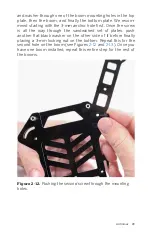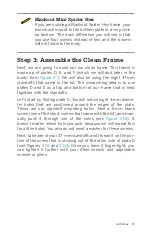
Tricopter
The tricopter is the only common multirotor that doesn’t have
an even number of props. It achieves yaw movement by placing
one of the three motor/prop combos (typically the one in the
back) on an axle that allows for angled thrust. It features three
propellers total.
Quadcopter
Probably the most popular design today, the quadcopter offers
the simplest mechanical design with the least number of
required components. It features four propellers total.
Hexacopter
Another very popular design is the hexacopter, due to its
increased ability to carry a payload while still remaining fairly
agile. It features six propellers; you may also hear this design
called a “flat six.”
Octocopter
The octocopter design is often used for aircraft that need
increased payload along with redundancy. Because it features a
total of eight propellers, it is possible for an octocopter to
remain in flight if there is any type of failure with any one of the
motors or props. The remaining seven will keep the craft in the
air without incident. You may also hear this design called a “flat
eight.”
Y6
The first of our “coaxial” aircraft, the Y6 features six motors and
propellers installed on an airframe with three arms. This is
accomplished by stacking motors and props on the top and bot-
tom of each arm with each spinning in the opposite direction
from the other. You have probably seen coaxial designs on com-
mon store-bought RC helicopters. This design type is inherently
more stable but 20%–25% less efficient than a traditional “flat”
design.
Airframes 17
Summary of Contents for Terry Kilby
Page 1: ......
Page 3: ...Make Getting Started with Drones Terry Kilby and Belinda Kilby...
Page 26: ......
Page 90: ......
Page 126: ......
Page 153: ...Figure 9 10 Compass setup Figure 9 11 Compass calibration ArduPilot Mega APM Setup 141...
Page 198: ......




































